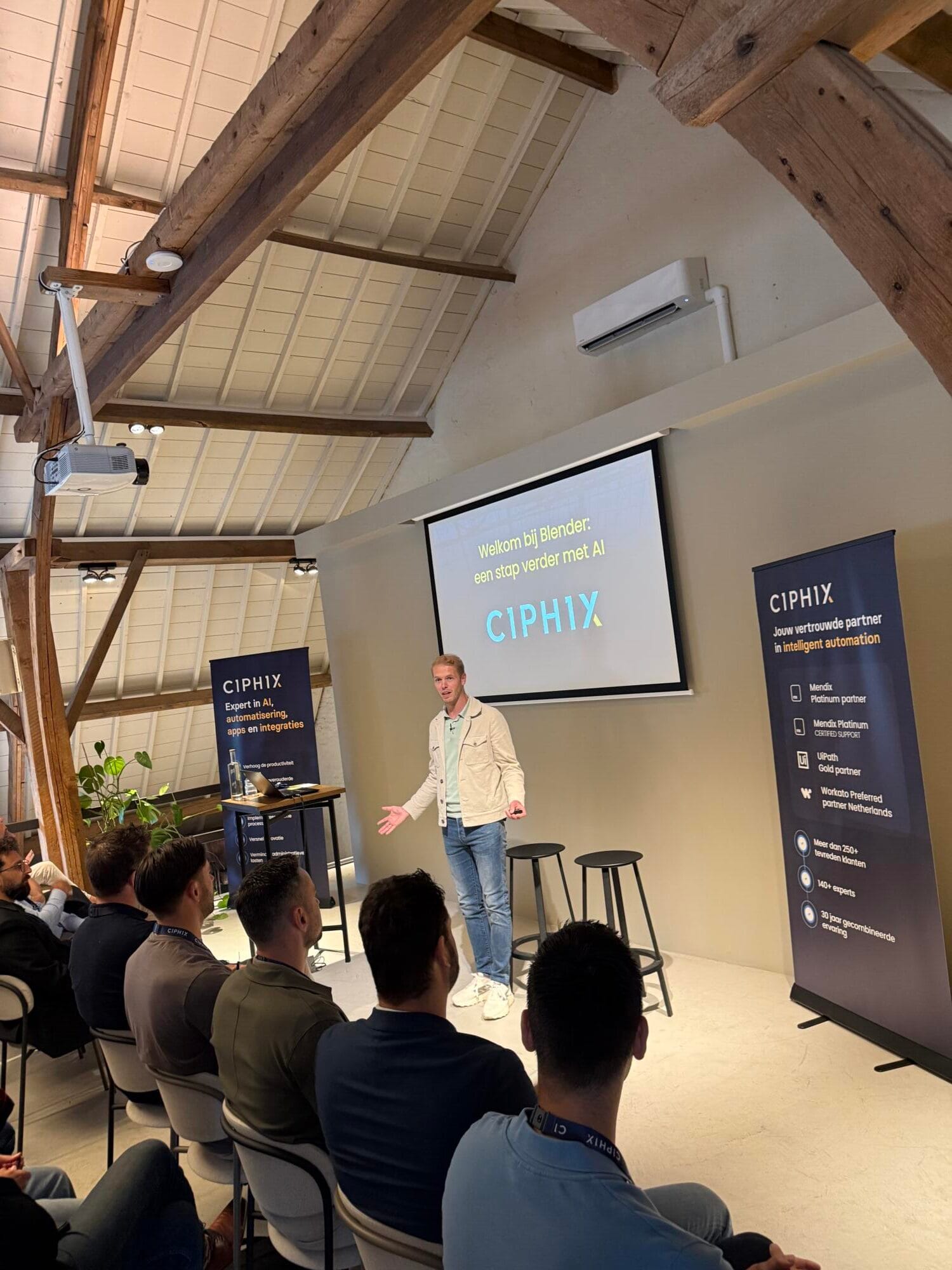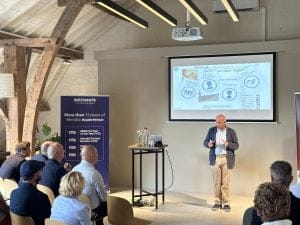From plans to practice: how organisations do get AI moving
1 July 2025 • News

Following the much-discussed conclusion that 72% of organisations do not move beyond AI plans and pilots, the Blender event on June 24 focussed on one question: how do you get out of it or take the next step? Participants from different sectors shared practical experiences, obstacles and most importantly, workable strategies to apply AI structurally.
The pilot is not the end point, but the beginning
Many organisations start with AI, but get caught up in small experiments that don’t follow through. During the event, it became clear: the problem is not the technology, but the lack of an approach that leads to scalable impact.
Successful applications start with a concrete problem, a small team (business, IT, sponsor), and a realistic six-week delivery target. Instead of endless planning, an initial, deliberately chosen use case helps make value tangible and get the organisation moving.
“The biggest pitfall is to keep waiting until everything is perfect. You don’t learn AI on paper – you have to do it,” says Florian Dijkstra, Pre-sales at Ciphix.
AI agents as both accelerator and mirror
A recurring theme was the use of AI agents: digital colleagues who independently support processes. From HR to order processing, participants shared examples of how agents save time as well as uncover unforeseen bottlenecks, such as outdated data sources or fragmented processes.
Royal Flora Holland showed how AI agent ‘Hannah Roos’ not only answered questions, but also led to data cleansing, awareness and scaling. Other organisations shared similar lessons: AI provides value, but also makes demands on data, collaboration and governance.
“A good AI pilot not only delivers value – it also shows exactly what your organisation is not yet ready for. And that is at least as valuable,” said Marijn van de Poel, Chief Proposition & Technology Officer at Ciphix.
From insight to action: five lessons
Five recurring insights emerged from panels, presentations and workshops:
- Start with an X-ray: analyse where the bottlenecks are on the shop floor.
- Choose a viable use case: valuable as well as feasible.
- Work multidisciplinary: IT, business and an internal sponsor at one table.
- Deliver in six weeks: starting small prevents organisational paralysis.
- Learn and improve continuously: don’t see a pilot as a project, but as a learning process.
Also striking was the realisation that data is rarely perfect. AI in particular makes painfully visible where things falter. Not as a risk, but as an opportunity to improve.
The real challenge: adoption
Technology is not the biggest obstacle, adoption is. The most successful examples during the event showed that continuous feedback, engaged end users and a focus on reliability make the difference. A smart solution that no one uses is not a solution.
From thinking to doing
AI delivers on its promise only when organisations stop analysing and actually take action. A common call during the event: “Just start.” Don’t wait until everything is perfect, but start and learn along the way.
The good news: the route from plans to practice is already there. With a viable use case, a multidisciplinary team and an iterative approach, one concrete step is often enough to make progress. It is precisely the small, concrete steps that start the biggest movement.
Related
We will help you further!
Replace outdated systems, digitize complex business processes and accelerate innovation.



